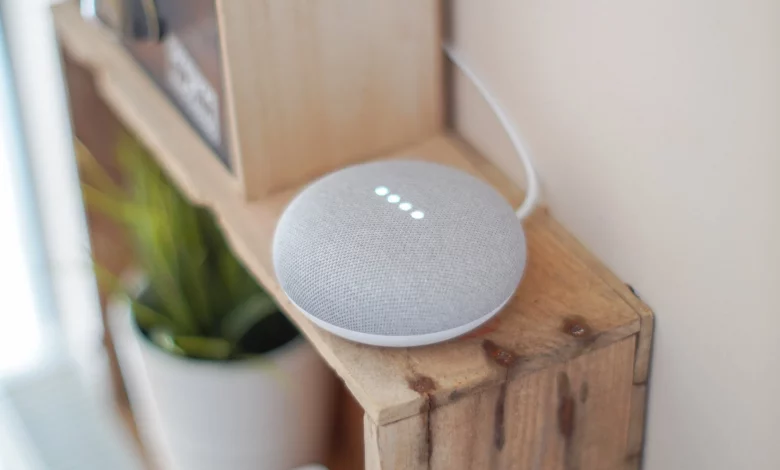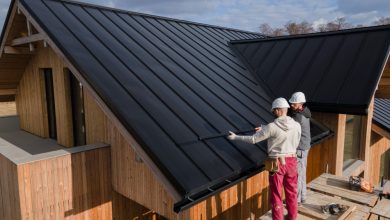5 Security Devices You Should Have For Your Home

Investing in a home security system can improve home safety and help protect your home from break-ins and theft. A home security system can improve overall home safety, protecting you and your family from potential home intruders. Top home security systems protect you from unexpected break-ins and allow you to keep an eye on your home remotely.
Security systems do a better job than ever keeping an eye on your home. What’s more, they allow you to control your devices and appliances while you’re away. Many homeowners have begun using their security system to turn their secure home into a smart home.
Here’s a look at some security devices to use to protect your home:
Table of Contents
Camera
We’ve all seen UFO-shaped cameras hanging on the ceiling at stores and businesses. But in recent years, many homeowners have installed discreet cameras to monitor their property. Adding cameras to your security system offers multiple benefits.
For starters, your cameras allow you to look into your home whenever you wish. Simply pick up your smartphone and view your camera’s live stream to check on your kids or pets. If your camera senses motion, it will immediately send the footage to your phone.
In addition to live streaming, your camera saves cloud-based clips for later reference. If you need to share a clip of something that happened inside or outside your home, you can do so with the click of a button.
Contact Sensors
Contact sensors use the same door and window contacts that you’d use to secure the perimeter of your home. However, unlike door and window sensors, contact sensors send you an alert without sounding your alarm. This unique smart home feature can create both life safety and property security.
Consider contact sensors on pool gates, closet doors, or other sensitive areas in and around the house. You do not have to feel confined to putting these sensors on doors or windows either. Toolboxes, safes, and equipment chests are all ideal targets for contact sensors.
Because contact sensors do not cause your siren to sound or create a police response, they can remain on even when your system itself is disarmed. If you open your own pool gate door or the closet with your most expensive jewelry, you can ignore the phone alert. However, if you receive an unexpected alert from an area with a contact sensor, you may want to investigate.
Motion Sensors
Motion sensors sound the alarm and/or trigger mobile alerts when motion is detected inside of the home. They are meant to be used as an added layer of protection. These devices emit an invisible light/laser, which when disturbed sounds the alarm. Some motion detectors use infrared technology that can sense body heat.
The best motion detectors can distinguish between people and pets, to limit false alarms. Some even have facial recognition technology. Others can shine a floodlight whenever movement is detected. Additionally, certain motion sensors can be integrated into smart home ecosystems and be configured to perform a number of commands.
Home Automation Controls
Home automation streamlines everyday tasks to make our lives easier and more efficient. Smart controls allow users to remotely control and automate everything from lights and thermostats, to garage doors, cameras, and even coffee makers.
Depending on the platform, smart home automation controls work via mobile commands (smartphone or tablet), voice commands, or both. You set the rules, and the house reacts accordingly. Turn down the lights
The features and tech range from simple commands (like turning on a reading light) to powerful AI-driven surveillance technology. It’s up to the user to decide how futuristic they want their home. The sky’s the limit with smart home automation controls. Many platforms can support literally hundreds of smart devices. This means users can customize their systems to their heart’s content.
Panic Buttons
These wall-mounted devices have a built-in help button. The life-saving button is pressed in the event of a medical emergency or home invasion. They summon help immediately. Many control panels have a built-in panic button that works via landline, Wi-Fi, or cellular to send a signal to the monitoring center (if the user has professional monitoring). In a time of crisis, simply press the panic button and rest assured that help is on its way.
These devices are also fairly simple. And simple is exactly what you want when precious seconds could save a life. Some control panels with panic buttons have a two-way voice so you can talk directly with responders.
Key Takeaway
Homeowners install smart home components based on what is important to them. For example, parents of small children may start with contact sensors for pool and household safety. Owners of vacation homes often focus on installing smart thermostats or smart locks to keep utility costs low and allow access to their vacation home from several states away.
Many people enjoy the benefits of added video monitoring. These homeowners are most likely to lean towards installing smart cameras and doorbells. Determining what is most important to you from a security and convenience standpoint will go a long way towards helping you begin to create your own smart home.




